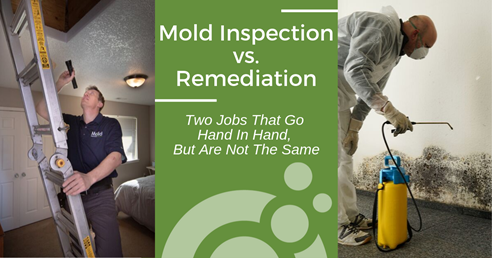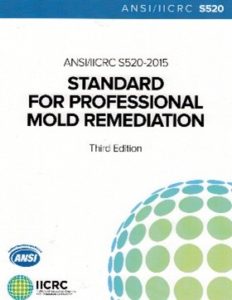
All About Remediation
We feature articles on all aspects of mold remediation and assessment.
Remediation is mold and mold spore removal. Not killing. Procedures for removal include:
- Cleaning surfaces including the lining of air conveyance systems of dusts contaminated with mold [including mold spores and fragments] using HEPA Vacuums and/or cleaning agents.
- Disintegration of mold (surface or air) by strong oxidizers such as strong bleach (Tilex®) or strong hydrogen peroxide or chlorine dioxide.
- Removal of contaminated substrates (demolition) followed by replacement with new materials when materials cannot be restored to as new by cleaning and/or the use of oxidants.
- Air scrubbing/filtering to remove mold spores and mold fragments from the air.

Here we focus on green chemical-free procedures. That means without the use of EPA-designated chemicals that leave a hazardous or toxic residue in order to limit mold growth recurrence.
Rather than use chemicals that leave a toxic residue, recurrence of mold growth is controlled by:
- Fixing the cause of the growth (moisture or unplanned air flows).
- Rebuilding with mold resistant materials such as moisture resistant green-board and moisture resistant flooring.
- Installing drywall with a gap at the floor as recommended by the Gypsum Association
- The use of mold resistant coatings, paints, encapsulants.
The remediation process includes engineering controls and other protective measures to prevent or minimize potentially harmful exposures to workers and occupants.
Under Mold Remediation we include discussion of articles and presentations covering both Pre and Post Remediation Assessment.
General Remediation
IICRC Presentation on Standards
Summary by IICRC of changes in S520-2015 third edition. Here we excerpt one page discussing PRV for discussion.
Why Base The Mold Inspection Report on IICRC Conditional Areas?
With the IICRC definitions, you determine how and where to remediate by analyzing mold spores in settled dust. Clearly 99.99% of the industry also uses visual cues, moisture meters, and air sampling as part of their inspection procedure. Dr. Spurgeon has completely re-written the definitions of IICRC Fungal Contamination Conditions from his point of view. Makes for interesting reading.
Post Remediation Verification Testing
Dr. Spurgeon takes on critical issues on Post Remediation Verification testing that no one wants to discuss. IICRC defines Post Remediation Testing in a peculiar way: as testing for spores in settled dust. Not air testing. As discussed in Spurgeon’s short PowerPoint, clearly air testing outside the containment is required to make sure that there has not been a containment breach that could impact the health of occupants.